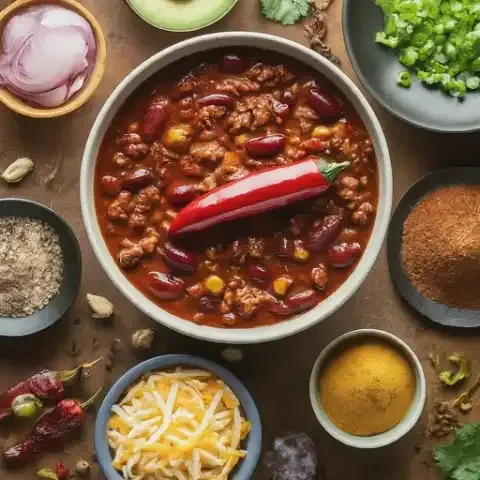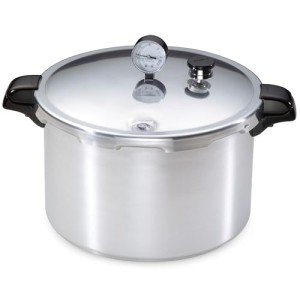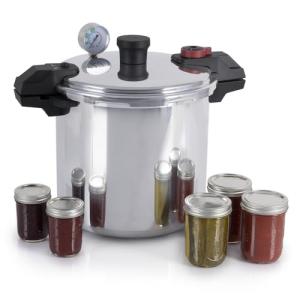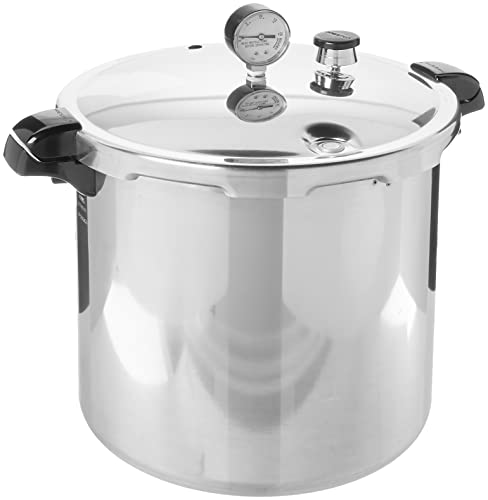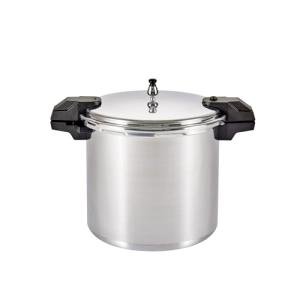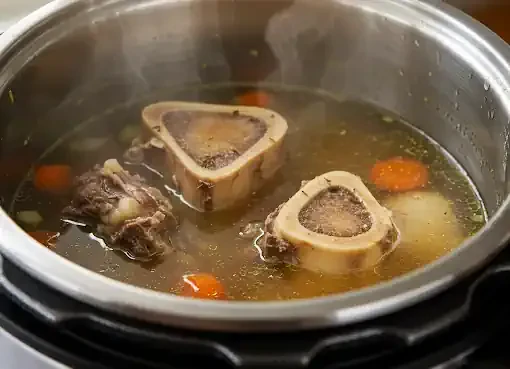The Secret Ingredient Revealed: Why Chipotle Peppers Are The Game-Changer
In a world of chili recipes, there's one ingredient that stands head and shoulders above the rest, transforming ordinary chili into an extraordinary culinary experience: the chipotle pepper. This humble, smoky chili pepper isn't just about heat – it's about depth, complexity, and a flavor profile that will leave you craving more.
Chipotle Peppers: A Flavor Profile Unlike Any Other
Chipotle peppers are not your average chili peppers. They're jalapeños that have been smoked and dried, resulting in a unique, earthy flavor with hints of sweetness and a subtle heat that builds slowly. This smoky complexity sets them apart from fresh chili peppers and adds a depth of flavor that's hard to replicate.
The Perfect Balance of Heat and Smokiness
One of the most remarkable qualities of chipotle peppers is their ability to strike the perfect balance between heat and smokiness. They provide a warmth that lingers on the palate without overwhelming it, making them ideal for those who enjoy a bit of spice but don't want their taste buds to be completely obliterated.
Elevating Chili Beyond the Ordinary
Adding chipotle peppers to your chili is like adding a secret weapon to your culinary arsenal. They transform a simple dish into a complex and satisfying experience. The smoky notes complement the richness of the meat and beans, while the subtle heat adds an extra layer of intrigue.
Chipotle Peppers: More Than Just Heat
While chipotle peppers are known for their heat, they offer so much more than just a spicy kick. Their complex flavor profile includes notes of chocolate, coffee, and even a hint of fruitiness. This complexity makes them a versatile ingredient that can be used in a variety of dishes, from savory stews to sweet desserts.
Gather Your Ingredients: The Essential Building Blocks of Flavorful Chili
Creating a truly exceptional chili requires a symphony of flavors, each ingredient playing a vital role in the final composition. From the humble onion to the fiery chipotle, every component contributes to the overall depth and complexity of the dish. So, let's dive into the essential ingredients that will elevate your chili from ordinary to extraordinary.
The Chili Trinity: Onions, Peppers, and Garlic
The foundation of any good chili is the holy trinity of aromatics: onions, peppers, and garlic. These three ingredients, when sautéed together, create a fragrant base that infuses the entire chili with savory goodness. Onions offer a sweet, caramelized depth, while bell peppers contribute a subtle sweetness and a touch of acidity. Garlic, with its pungent aroma and bold flavor, adds a layer of complexity that's hard to resist.
For a classic chili, opt for yellow or white onions, green bell peppers, and plenty of fresh garlic cloves. But don't be afraid to experiment with other varieties, like red onions for a touch of sweetness or poblano peppers for a smoky twist.
Meaty Matters: Choosing Your Protein
The choice of protein is crucial in determining the overall character of your chili. Whether you prefer beef, pork, or a combination of both, selecting high-quality cuts is essential for optimal flavor and texture. Ground beef is a popular choice for its versatility and affordability, while chuck roast, when slow-cooked, becomes melt-in-your-mouth tender.
If you're looking for a leaner option, ground turkey or chicken can be used, but be sure to add extra spices and seasonings to compensate for the lack of fat. For a vegetarian twist, consider using lentils, black beans, or crumbled tempeh as your protein source.
Beans, Beans, The Magical Fruit: Selecting The Perfect Varieties
Beans are not just a source of protein in chili; they also add a creamy texture and a hearty, satisfying quality. Kidney beans are a classic choice, but pinto beans, black beans, or even chickpeas can be used to create unique flavor combinations.
When selecting beans, you have two options: dried or canned. Dried beans require soaking and longer cooking times, but they offer a superior texture and flavor. Canned beans are more convenient, but be sure to rinse them thoroughly before adding them to your chili.
Spices And Seasonings: The Soul of Your Chili
The spices and seasonings are what truly bring your chili to life. Chili powder, cumin, paprika, and oregano are the backbone of most chili recipes, but don't be afraid to get creative. Add a pinch of cinnamon for warmth, a dash of cayenne pepper for extra heat, or a sprinkle of smoked paprika for a deeper, smokier flavor.
Fresh herbs, like cilantro or parsley, can be added at the end of cooking for a burst of freshness, while a splash of vinegar or a squeeze of lime juice can brighten up the flavors. Don't forget the salt and pepper, which are essential for balancing the flavors and enhancing the overall taste of your chili.
Prep Like A Pro: Simple Steps For Chili Success
Transforming a collection of raw ingredients into a delicious pot of chili requires a bit of culinary finesse. But fear not, even novice cooks can master the art of chili prep with a few simple steps. By following these guidelines, you'll ensure that your chili is cooked evenly, bursting with flavor, and ready to impress your taste buds.
Dice With Precision: The Key To Even Cooking
The first step to chili success is dicing your ingredients with precision. This means cutting your onions, peppers, and garlic into uniform pieces that will cook at the same rate. This not only ensures even cooking but also contributes to the overall texture of the chili.
Start by peeling and dicing your onions into small, evenly sized pieces. Then, remove the seeds and membranes from your bell peppers and dice them to match the size of your onions. Finally, mince your garlic cloves into fine pieces. A sharp knife and a steady hand are your best tools for this task.
Sautéing For Flavor: The Aromatic Foundation
Once your ingredients are diced, it's time to build the aromatic foundation of your chili. Sautéing your onions, peppers, and garlic in a bit of oil or butter will soften them and release their natural sugars, creating a sweet and savory base for the rest of your chili.
Heat your pot over medium heat and add a drizzle of oil or a pat of butter. Once the oil is shimmering or the butter is melted, add your diced onions and peppers. Sauté them, stirring occasionally, until they become soft and translucent, about 5-7 minutes. Then, add your minced garlic and continue to sauté for another minute, until fragrant.
Pressure Cooker Prep: A Few Key Tips
Before you unleash the pressure, there are a few key tips to keep in mind. First, make sure your pressure cooker is clean and in good working order. Check the gasket and sealing ring for any damage or debris, and ensure that the pressure release valve is functioning properly.
Next, deglaze your pot by adding a splash of liquid, like broth or water, and scraping up any browned bits stuck to the bottom. This will add flavor to your chili and prevent burning.
Finally, don't overfill your pressure cooker. Leave enough space for the steam to circulate and build pressure. If your pot is too full, it may not reach the desired pressure or could even lead to a messy explosion.
The Secret Ingredient: When To Add The Chipotle Peppers
Timing is everything when it comes to adding your secret ingredient, chipotle peppers. While some recipes call for adding them at the beginning of cooking, we recommend adding them later in the process to preserve their smoky flavor and prevent them from becoming too overpowering.
The best time to add chipotle peppers is after you've sautéed your aromatics and browned your meat. This allows the chipotle peppers to infuse the chili with their smoky flavor without becoming bitter or overpowering.
Simply chop the chipotle peppers into small pieces and add them to the pot along with the rest of your ingredients. Remember, a little goes a long way, so start with a small amount and adjust to your taste preference. You can always add more later if you want a spicier chili.
Unleash The Pressure: Cooking Your Chili To Perfection
With your ingredients prepped and your pressure cooker primed, it's time to harness the power of pressurized cooking to transform your chili into a masterpiece of flavor and texture. The pressure cooker's magic lies in its ability to rapidly tenderize meats, meld flavors together, and create a rich, hearty chili in a fraction of the time it would take on the stovetop.
The Perfect Cooking Time: Finding Your Sweet Spot
One of the most common questions when pressure cooking chili is, "How long should I cook it?" The answer depends on a few factors, including the type of protein you're using, the size of your ingredients, and your personal preference for texture.
Generally, ground meat chili requires less cooking time than chili made with larger cuts of meat. A good starting point for ground meat chili is 10-15 minutes at high pressure, followed by a natural pressure release. If you're using larger chunks of meat, like chuck roast, you may need to increase the cooking time to 20-30 minutes.
Remember, these are just guidelines. The best way to determine the perfect cooking time for your chili is to experiment and adjust based on your preferences.
Natural Pressure Release: The Flavor-Enhancing Wait
After the cooking time is complete, resist the urge to immediately release the pressure. Instead, allow the pressure cooker to naturally release pressure for 10-15 minutes. This allows the flavors to meld together and the chili to thicken naturally.
During this time, the steam inside the pressure cooker gradually dissipates, and the pressure slowly decreases. This gentle release of pressure helps to prevent the liquid from boiling over and ensures that your chili retains its rich, hearty texture.
Quick Release: When Time Is Of The Essence
If you're short on time, you can opt for a quick release, but be cautious. This involves manually releasing the pressure by turning the pressure release valve to the venting position. This method releases the pressure rapidly, but it can also cause the liquid to splatter and make a mess.
If you choose to quick release, do so slowly and carefully. Start by turning the valve slightly to release a small amount of steam, then gradually increase the opening until all the pressure is released. Be sure to keep your hands and face away from the steam to avoid burns.
Adjusting For Altitude: Don't Let The Pressure Get To You
If you live at a high altitude, you may need to adjust your cooking time and pressure level. This is because water boils at a lower temperature at higher altitudes, which can affect the cooking process in a pressure cooker.
Consult your pressure cooker's manual or an online resource for specific recommendations for cooking at high altitude. Generally, you may need to increase the cooking time or the pressure level to compensate for the lower boiling point.
Flavor Fusion: Customizing Your Chili To Your Taste
Every chili enthusiast has their own unique preferences when it comes to flavor. Some crave a fiery inferno, while others prefer a milder, more nuanced heat. Some like their chili sweet, while others lean towards savory. The beauty of chili lies in its adaptability, allowing you to customize it to your heart's content.
Heat It Up: Adding More Spice To Your Chili
If you're a fan of fiery flavors, there are plenty of ways to amp up the heat in your chili. You can start by adding more chipotle peppers, but be sure to do so gradually, tasting as you go. You can also add a pinch of cayenne pepper, a dash of hot sauce, or even a few slices of fresh jalapeño for an extra kick.
For a more complex heat, consider using a blend of different chili peppers, like ancho, guajillo, or pasilla peppers. These peppers offer unique flavor profiles and varying levels of heat, allowing you to create a multi-dimensional chili that's both spicy and flavorful.
Cool It Down: Taming The Flames With Dairy
If you find your chili too spicy, don't despair. There are several ways to tame the flames and create a more balanced flavor profile. One of the most effective methods is to add dairy, like sour cream, yogurt, or even a splash of milk.
Dairy products contain casein, a protein that binds to capsaicin, the compound responsible for the heat in chili peppers. This helps to neutralize the spiciness and create a smoother, creamier texture. Simply stir in a dollop of sour cream or a spoonful of yogurt to your chili and adjust the amount to your taste preference.
Sweetness And Spice: Finding The Perfect Balance
The interplay between sweetness and spice is a hallmark of many chili recipes. The sweetness can come from a variety of sources, like brown sugar, honey, or even a splash of maple syrup.
Adding a touch of sweetness to your chili not only balances the heat but also enhances the overall flavor profile. It can create a more complex and nuanced chili that's both savory and satisfying. Experiment with different sweeteners to find the perfect balance for your taste buds.
Umami Boost: Adding Depth With Unexpected Ingredients
Umami, the fifth taste, is often described as savory or meaty. It adds depth and complexity to dishes, making them more satisfying and flavorful. There are several ways to boost the umami in your chili, including adding ingredients like soy sauce, Worcestershire sauce, or even a spoonful of miso paste.
These ingredients contain glutamates, which are naturally occurring amino acids that contribute to the umami flavor. Adding a small amount of these umami-rich ingredients can elevate your chili to new heights of flavor, creating a dish that's both hearty and complex.
Serving Your Chili: A Fiesta of Toppings And Sides
Your pressure cooker chili is ready to take center stage, but the culinary adventure doesn't end there. The real fun begins when you transform a simple bowl of chili into a personalized masterpiece, a canvas for your creativity and taste preferences. From classic toppings to unexpected twists, the possibilities are endless. Let's explore the world of chili toppings and sides that will elevate your dining experience.
Classic Chili Toppings: Shredded Cheese, Sour Cream, and Green Onions
No chili is complete without the holy trinity of toppings: shredded cheese, sour cream, and green onions. These three ingredients offer a perfect balance of flavors and textures, adding richness, creaminess, and a touch of freshness to every bite.
Shredded cheddar is a classic choice for chili, but don't be afraid to experiment with other cheeses, like Monterey Jack, pepper jack, or even crumbled feta. Sour cream adds a tangy creaminess that cools the heat, while green onions provide a bright, fresh bite that cuts through the richness.
Crunchy Delights: Tortilla Chips, Croutons, and Fritos
Adding a crunchy element to your chili is a surefire way to elevate its texture and create a more satisfying eating experience. Tortilla chips are a popular choice, offering a salty, savory crunch that complements the chili's flavors. Croutons, whether homemade or store-bought, add a buttery, garlicky dimension that pairs well with the chili's richness.
For a truly unique twist, try crushing up some Fritos corn chips and sprinkling them on top of your chili. The sweetness of the corn chips contrasts beautifully with the chili's spiciness, creating a symphony of flavors in every spoonful.
Freshness Explosion: Cilantro, Avocado, And Pico De Gallo
For a burst of freshness, consider adding a handful of chopped cilantro, a few slices of avocado, or a generous scoop of pico de gallo to your chili. Cilantro adds a bright, citrusy flavor that cuts through the chili's richness, while avocado provides a creamy texture and a dose of healthy fats.
Pico de gallo, a vibrant salsa made with tomatoes, onions, cilantro, and lime juice, adds a zesty kick and a burst of color to your chili. It's a perfect way to add freshness and complexity to your dish.
Pairing Perfection: Cornbread, Rice, And Beer
No chili feast is complete without the perfect sides and beverages to complement its flavors. Cornbread is a classic pairing, its sweetness balancing the chili's spiciness and its crumbly texture contrasting with the chili's heartiness.
Rice, whether white or brown, is another excellent choice for soaking up the chili's flavorful broth. And what better way to wash it all down than with a cold, refreshing beer? The bitterness of the beer can help to cut through the chili's richness, while the carbonation cleanses the palate between bites.
Beyond The Bowl: Leftovers And Make-Ahead Tips
Your pressure cooker chili is not only a delicious meal in itself, but it also offers a wealth of possibilities for leftovers and meal prepping. With a little creativity and planning, you can transform your leftover chili into exciting new dishes or prepare it ahead of time for a convenient and satisfying weeknight meal.
Creative Leftovers: Chili Dogs, Chili Mac, And More
Leftover chili is a gift that keeps on giving. Its versatility lends itself to a variety of creative dishes that are sure to please everyone at the table. One classic option is chili dogs, where you pile your chili onto hot dogs and top them with your favorite condiments like mustard, ketchup, and relish.
Chili mac is another crowd-pleaser, combining the hearty flavors of chili with the cheesy goodness of macaroni and cheese. Simply mix your leftover chili with cooked macaroni, top it with shredded cheese, and bake until bubbly and golden brown.
But don't stop there! Leftover chili can also be used as a topping for baked potatoes, nachos, or even scrambled eggs. Get creative and experiment with different combinations to discover your own unique chili creations.
Freezing For Later: Preserve Your Flavorful Creation
If you have a large batch of chili and don't plan on eating it all within a few days, freezing is a great way to preserve its flavor and freshness. Let the chili cool completely before transferring it to airtight containers or freezer bags.
When freezing chili, leave some headspace in the container to allow for expansion as the chili freezes. Label the containers with the date and contents for easy identification. Frozen chili can be stored for up to 3 months.
To reheat frozen chili, thaw it overnight in the refrigerator or use the defrost setting on your microwave. Once thawed, heat it up on the stovetop or in the microwave until it's hot and bubbly. You can also reheat it in your pressure cooker using the sauté function.
Meal Prep Magic: Double The Recipe For Easy Weeknight Meals
One of the best things about chili is that it makes a perfect meal prep dish. By doubling your recipe, you can have a week's worth of delicious and nutritious meals ready to go. Simply portion out the chili into individual containers and store them in the refrigerator or freezer.
When you're ready to eat, simply reheat the chili on the stovetop or in the microwave. You can also add a variety of toppings and sides to keep things interesting. Meal prepping chili not only saves time but also ensures that you have a healthy and satisfying meal on hand, even on your busiest days.
Gift From The Kitchen: Share Your Chili With Friends And Family
Chili is a dish that's meant to be shared. Its warmth and comforting flavors are perfect for gatherings with friends and family. Whether you're hosting a potluck or simply want to show someone you care, a jar of homemade chili is a thoughtful and delicious gift.
Simply transfer your chili to a mason jar or other airtight container and decorate it with a ribbon or a personalized label. You can even include a recipe card with suggestions for toppings and sides. Your friends and family will appreciate the gesture and the deliciousness of your homemade chili.
Summary
This comprehensive guide unveils the secrets to crafting an extraordinary pressure cooker chili, where chipotle peppers play the starring role. By harmonizing the smoky depth and nuanced heat of chipotle peppers with a symphony of carefully selected ingredients, you'll elevate your chili from ordinary to unforgettable.
The journey begins with a meticulous selection of aromatics, proteins, beans, and spices, each playing a crucial role in the flavor symphony. Detailed instructions guide you through prepping the ingredients for optimal cooking, including precise dicing and sautéing techniques to build a flavorful foundation.
The pressure cooker then takes center stage, harnessing its power to meld flavors and tenderize ingredients in a fraction of the time. Expert tips on cooking times, pressure release methods, and high-altitude adjustments ensure perfectly cooked chili every time.
But the adventure doesn't end there. Unleash your creativity by customizing your chili with a variety of heat levels, sweetness, and umami-boosting ingredients. Discover a plethora of toppings and sides, from classic combinations to unexpected twists, that will transform your chili into a personalized culinary masterpiece.
Finally, learn how to extend the enjoyment of your chili by exploring creative uses for leftovers, mastering the art of freezing and reheating, and even sharing your culinary creation as a heartfelt gift. This guide empowers you to not only create a delicious chili but also to make it uniquely yours, a reflection of your taste and culinary passion.
